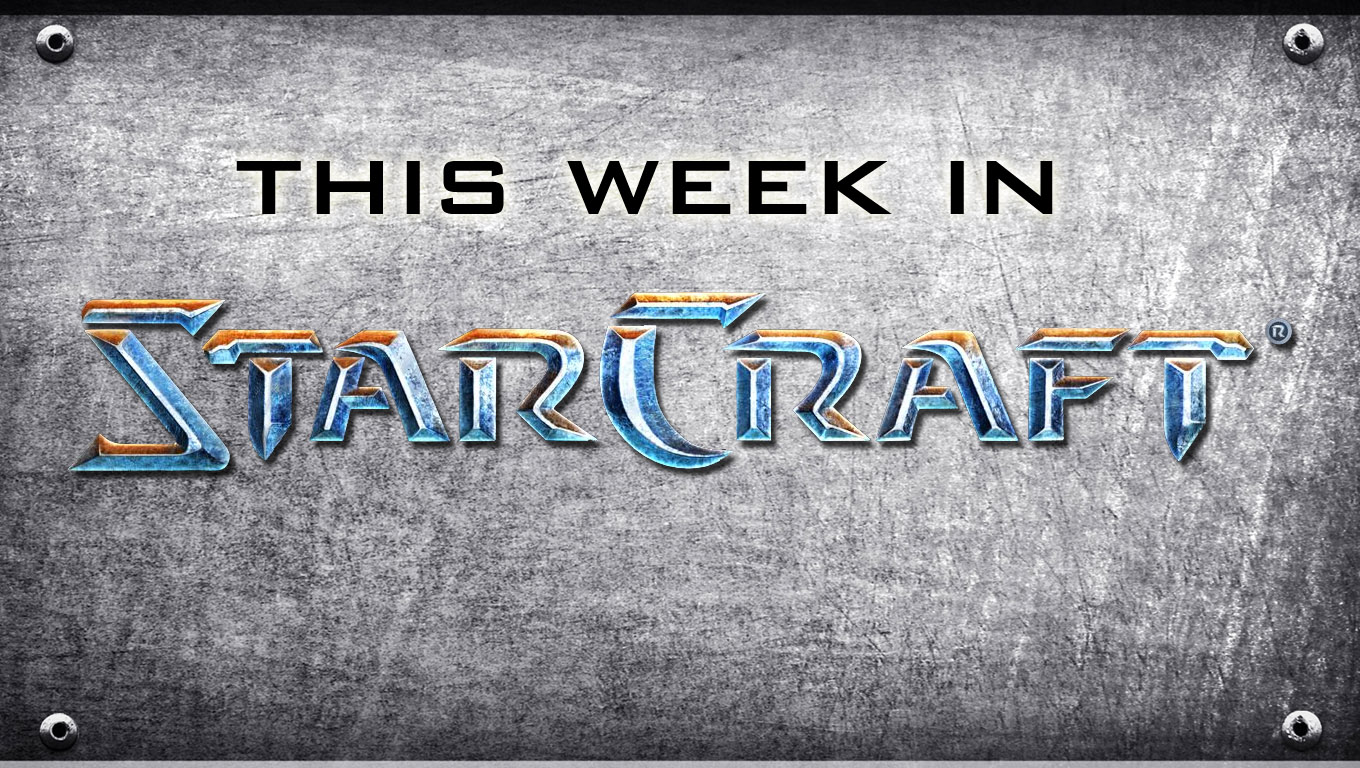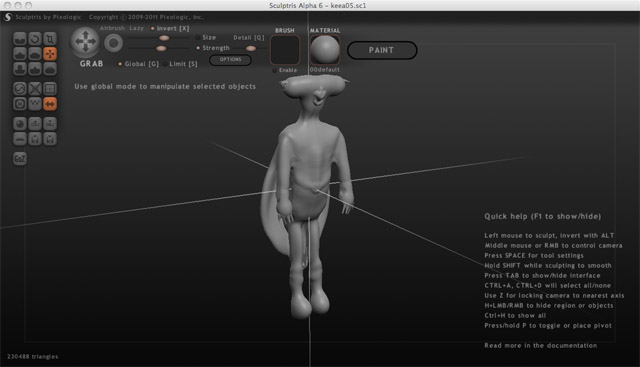
Science fiction and technology writer
Popular blog posts
Recent forum posts
Discussion Forum
Discussion forumKnotty Geeks Episode 20 - Baccalaureates and Battleships
Post #: 175
Post type: Podcast
Date: 2013-04-22 13:34:13.000
Author: Jeremy Reimer
Tags: Knotty Geeks
In this episode, recorded ONLY A WEEK after the last one, we head out to the University of British Columbia and sit outside the Student Union Building. Topics include playing Starcraft, the gap between trying something and succeeding at it, the rise of good television, and the movie Battleship compared to real battleships.
uploads/Knotty_Geeks_Episode_20.mp3" />
Knotty_Geeks_Episode_20.mp3" width="290" height="24" />
Views: 7542
New show: This Week in Starcraft!
Post #: 173
Post type: Blog post
Date: 2013-04-19 16:42:46.000
Author: Jeremy Reimer
Tags: Starcraft
Hello!
I’ve always wanted to do a news show, and I love professional Starcraft, so I’ve combined my passions into a weekly show called... wait for it... This Week in Starcraft.
You can watch Episode 1 here:
http://www.twitch.tv/jeremyreimer/c/2177275
And you can watch it live every Friday at 3PM PST here:
http://www.twitch.tv/jeremyreimer
It’s basically a recap of what’s been happening in the professional Starcraft scene over the last week. I try to keep it down to 30 minutes because who has that much time in life?
Hope to see you there!
Views: 7233
New Knotty Geeks logo!
Post #: 172
Post type: Blog post
Date: 2013-04-16 14:47:37.000
Author: Jeremy Reimer
Tags: Knotty Geeks
iTunes recently changed their rules for podcast feeds, and one of the new requirements is a high-resolution logo (1400 x 1400) so that all those lovely iPad Retina Displays don’t see nasty pixels.
So here’s the new logo, whipped up in Photoshop:
Views: 6586
Knotty Geeks Episode 19 - Bluetooth Mics and Ear Buds
Post #: 171
Post type: Podcast
Date: 2013-04-15 16:41:26.000
Author: Jeremy Reimer
Tags: Knotty Geeks

In this episode of Knotty Geeks, we try something different and record directly to our iPhones, then mix the two sources together.
Surprisingly, it worked! However, we messed up and recorded the audio at a criminally low 11kHz sample rate. That mistake will be rectified next week. WHAT?? NEXT WEEK?? Yes... we are going to be doing these a LOT more regularly now with our new setup!
The hardest part about mixing the two recordings together was getting them perfectly synced. Terry let out a big "BEEEP" at the beginning but it turns out that isn’t the best waveform to sync two sources with. I had more success just going off individual words, zoomed in at the highest level of detail, in the middle of the podcast. Also I discovered that putting one person on Left channel and the other on the Right seems like it would sound cool but ends up being kind of disconcerting to listen to. Putting both on one channel works better.
Note: The discussion in this episode wanders all over the place. We start by talking about the imminent release of my new article on the history of the Amiga on Ars Technica, and somehow end up discussing North Korea at the end. Somehow, though, it all works!
Link from the show:
Old-school Modem demonstration: http://www.youtube.com/watch?v=RxM_0BguTkE
./uploads/Knotty_Geeks_Episode_19.mp3" />
./Knotty_Geeks_Episode_19.mp3" width="290" height="24" />
Download show directly
Views: 6888
The Windows 8 Anchor
Post #: 170
Post type: Blog post
Date: 2013-04-11 18:51:41.000
Author: Jeremy Reimer
Tags: Computers, Operating Systems
The news is out that PC sales have fallen 14% last quarter over the same quarter a year ago.
Many people are blaming Windows 8 for accelerating this decline, rather than halting it.
Or, as The Professor so eloquently put it, "In other words, MS’s customers were drowning and Ballmer threw them an anchor."
The mental image made me laugh, so I thought I’d whip up something in Photoshop:
Views: 7416
3D modeling the Ke’ea with Sculptris!
Post #: 169
Post type: Blog post
Date: 2013-04-09 20:21:33.000
Author: Jeremy Reimer
Tags: Writing, Science Fiction
I’ve long been an avid fan of 3D modeling, but the software is usually expensive and takes hundreds of hours to learn.
For those who don’t want to invest quite that much money and time, there is Sculptris from Pixologic. The basic application is free, with a more professional version available if you want.
It takes a much more artist-friendly approach to 3D. You start off with a big sphere, and use the mouse (although it works MUCH better with a graphics tablet, even a simple one like my entry-level Bamboo works great) to stretch, pinch, grow, and contract. It feels very much like sculpting clay. A bit of pulling and smoothing later, and you can create a very organic-looking 3D mesh. Here’s my first attempt at modeling my Ke’ea race of intelligent avians:
The program also includes texturemapping that works with the mouse or tablet to "paint" textures right on the surface. It’s very cool, and the price is right!
Views: 6515
Knotty Geeks Episode 18 - Software Startups
Post #: 168
Post type: Podcast
Date: 2013-04-04 15:59:18.000
Author: Jeremy Reimer
Tags: Knotty Geeks
On this episode of Knotty Geeks, we talk about software startups and how they might use various methods of marketing. Terry insists that viral marketing isn’t, and also disdains DropBox, which he will definitely live to regret.
./uploads/Knotty_Geeks_Episode_18.mp3" />
<embed src="includes/players/1pixelout.swf" flashvars="soundFile=./uploads/Knotty_Geeks_Episode_18.mp3" width="290" height="24" />
Views: 6601
New comic!
Post #: 167
Post type: Blog post
Date: 2013-03-30 11:03:39.000
Author: Jeremy Reimer
Tags:
New comic uploaded! Go here: http://jeremyreimer.com/comic.lsp?c=Star%20Gamer
Views: 6809
Overcoming Ladder Anxiety: The Show
Post #: 165
Post type: Blog post
Date: 2013-03-19 16:38:10.000
Author: Jeremy Reimer
Tags: Starcraft
There are a couple of things I always wanted to do but never did.
One of them was to have the courage to play Starcraft, 1v1, on the ladder.
Another one was to have a TV show.
So I've combined the two into a show I call "Overcoming Ladder Anxiety", a show on Twitch.tv:
http://twitch.tv/jeremyreimer/videos
It's basically my journey through playing ladder for the first time ever, talking about my anxiety and dealing with how reality doesn't quite match up to your expectations. It's about how Starcraft can teach you lessons about life.
The show runs Monday to Friday at 2:00 pm Pacific. Please join in live, or watch the videos! Thanks!
Views: 7342
Edge of Infinity has been selected as a Breakout Book by Apple UK and Ireland!
Post #: 164
Post type: Blog post
Date: 2013-03-05 00:04:57.000
Author: Jeremy Reimer
Tags: Science Fiction, Writing

For the first time, Apple’s iBookstore has included independently-published books in its "Breakout Books" feature, and Edge of Infinity is one of the 55 titles selected by iBookstore UK and iBookstore Ireland!
This is really exciting for me, not only because of the extra exposure for my novels, but also because it shows that independent authors are becoming a force to be reckoned with in the market.
Edge of Infinity can be found in the Apple iBookstore at the following link.
https://itunes.apple.com/us/book/edge-of-infinity/id595636629?mt=11
You can learn more about this promotion here:
http://blog.smashwords.com/2013/03/apple-ibookstores-in-uk-and-ireland.html
Thank you, Apple, for your support of independent authors. Let’s make a dent in the universe!
Views: 9818
So who am I?
I'm a writer and programmer. I write science fiction stories and novels.
I am the writer for the upcoming documentary series Arcade Dreams.
I also write technology articles for Ars Technica.
I'm the creator of newLISP on Rockets, a web development framework and blog application.
- Email: jeremy.reimer@gmail.com
Topics
3D Modeling
About Me
Amiga
Articles
Audio
Blockchain
Blog
Blogs
Book Reviews
Book review
Comics
Computer history
Computers
Computers Microhistory
Computing
Conventions
Crypto
Daily update
Entrepreneur
Family
Forum post
Gaming
Gaming Starcraft
Gaming metaverse
Internet
Jeremy Birthday
Keats
Kickstarter
Knotty Geeks
Knotty Geeks (video)
Market Share
Masters Trilogy
Monarch
Movies
My Non-Fiction
My Science Fiction
NewLISP Blog
Novels
OSY
Operating Systems
Pets
Poll
Reviews
Science Fiction
Servers
Software
Software Operating Systems
Space
Star Gamer
Star Trek
Starcraft
Television
Testing
Toys Childhood
Valheim
Wedding Marriage
Work
Work Life
World
Writing
 RSS Feed for this blog
RSS Feed for this blog